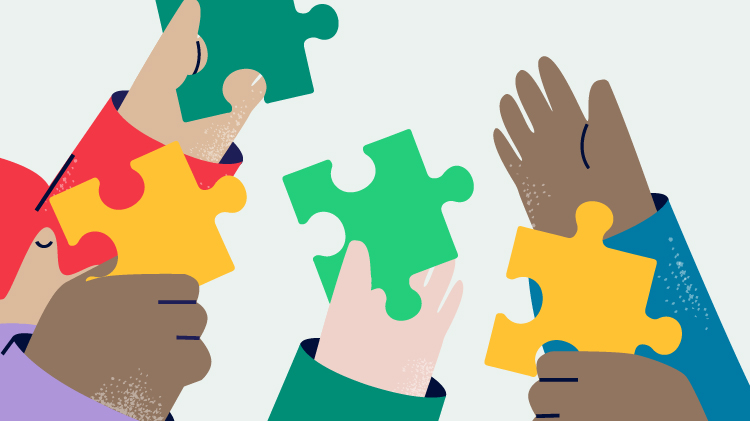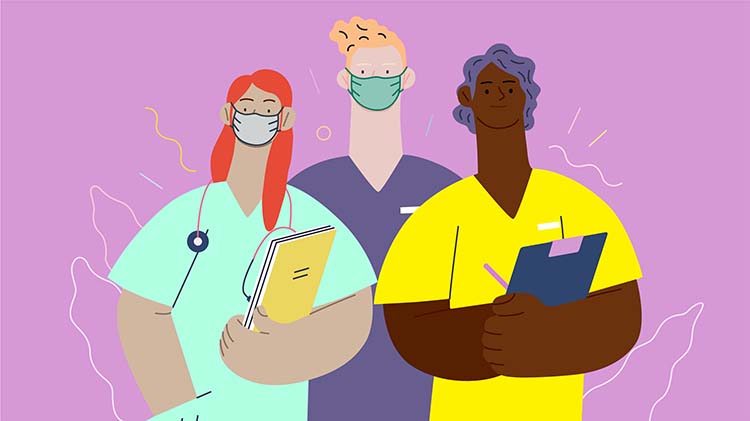Misconceptions about shared decision making
29 Sep 2022

SDM — the barriers and misconceptions
-
Time constraint – the most frequent concern and barrier to adopting SDM1
Three systematic reviews on intervention to implement SDM and the impact of decision aids on processes of care and patient outcomes indicate there is no systematic increase in consultation duration when SDM is implemented, or decision aids are used.2
-
Patients will be unsupported when making healthcare decisions
There can be a fear that SDM will make patients feel abandoned during difficult decisions, which is a misinterpretation of its intent. SDM is not about insisting every patient make the decision – rather, it helps to ensure patients are informed about their options and are offered the opportunity to participate in the process.3
-
Not every patient wants to share the decision-making process with their clinician
An Australian survey found more than 90 per cent of women preferred a shared role with their doctor in making decisions about screening and diagnostic tests.4 A European survey of more than 8,000 people reported a high desire for SDM which was greater than 70 per cent of the sample.5
A systematic review of 14 studies that examined the match between patient preferences about information and decision-making with clinician–patient communication found that a substantial number of patients (52 per cent) were dissatisfied with the information given and would have preferred a more active role in decisions concerning their health, especially when they understood the expectations attached to this role.6
Interestingly, of studies conducted in 2000 and later, most respondents preferred a role in sharing decisions compared to 50 per cent of studies conducted before 2000.7 This no doubt correlates to an increased level of health literacy in the community.
-
Most people are not able to participate in SDM
Critics assert that it’s too complex.8 Clinicians who regularly adopt this process maintain SDM is comprised of a set of behaviours that can be learnt, and patients and carers can also learn this process.9
-
SDM cannot be used with vulnerable people
SDM is too complex for all patients to acquire, and vulnerable people may never be able to share decisions with their clinicians.10
Most surveys show that vulnerable people are less willing to participate.11 We need to be careful not to increase health inequities by offering SDM solely to the most privileged patients.
Individuals with low health literacy want to be involved in health decisions, but often lack the knowledge, skills and confidence to communicate with clinicians, navigate the health system, and engage in SDM.12 They receive less information, ask fewer questions, and are less satisfied with the clinician’s communication; and what we see is they are the ones more likely to complain or make a claim.13
In order to decrease health inequities, more needs to be done to engage the most vulnerable patients to make informed decisions.14
-
I already do this
Most clinicians feel they already successfully engage their patients in SDM – a belief that may arise from not really understanding what it is and how to do it.15
-
Fear of raising patients’ anxiety levels
Some clinicians are afraid SDM will raise patients’ anxiety levels as they become aware of the inherent uncertainty of evidence.16
A Cochrane review of decision aids refutes this misconception, finding no effect on anxiety – noting anxiety should not be confused with the decisional conflict individuals can experience when comparing the pros and cons of different options17.
Are decision aids crucial?
This is a frequently asked question regarding SDM.
The short answer is, they are valuable but not necessarily essential. They are very useful for patients with a low level of health literacy, and further enhance a patient’s understanding even with a high level of health literacy.
Decision aids including option grids are tools designed to facilitate patient participation in healthcare decisions. Practitioners can use a simple graphic to supplement (but not replace) the discussion with the patient, carer, or family.
Research supports the view that patients who are given decision aids are more knowledgeable, feel better informed, are clear about their values, and generally have a more active role in decision-making (which is one of the objectives of SDM). They also have a better understanding of the risks and may achieve decisions consistent with their informed values.18
Decision aids can reduce the use of discretionary surgery without apparent adverse effects on health outcomes or satisfaction.19 They can be very effective when there is more than one medically reasonable option to diagnose or treat a health problem.
Decision aids prepare a patient for decision-making, provide facts about a person’s condition and the options. They help the patient clarify and share their values with the health practitioner so that a course can be planned that matches their values.20
The Australian Commission on Safety and Quality in Health Care has extensive education on decision aids – ranging from videos, webinars, support tools, and links to the Ottawa Hospital Research Institute (a leader in SDM).
References.
Overall document reference: HoffmanT, Legare F, Simmons M. Shared decision making: what do clinicians need to know and why should they bother? MJA 201 (1) 7 July 2014-35
1. Cababa MD, R and Cs, Powe NR. Why don’t physicians follow clinical practice guidelines? A framework for improvement. JAWA 1999; 282: 1458-1465
2. Legare F, Turcotte S, Stacey D. Patients’ perceptions of sharing in decisions; a systematic review of interventions to enhance shared decision making in routine clinical practice. Patient 2012-5:1-19
3. Ibid Hoffman T–39
4. Davey HM, Barratt AL, Davey E. Medical tests: women reported and preferred decision-making roles and preferences for information on benefits, side-effects, and false results. Health expert 2022; 5:330-340
5. Coulter A, Jenkinson C. European patients’ views on the responsiveness of health systems and healthcare providers. Eur J Public Health 2005;15: 355-360
6. Kiesler DJ, Auberbach SM. Optimal matches of patient preferences for information, decision-making and interpersonal behaviour: evidence models and interventions. Patient Educ. Couns 2006; 61:319-341
7. Chewning B, Bylund CL, Shah B. Patient preferences for shared decisions: a systematic review. Patient Educ Couns 2012-86: 9-18
8. Ibid Hoffman T-39
9. Frosch DL, Legare F, Fishbein M, Elwyn G. Adjuncts, or adversaries to shared decision making?
10. Ibid Hoffman T-39
11. Kiesler DL, Legare F, Fishben M, Elwyn G. Adjuncts or adversaries to shared decision-making? Applying the integrative model of behaviour to role and design of decision support interventions in healthcare interactions. Implement Sci 2008; 4:73
12. Smith SK, Dixon A, Trevena L. et al. Exploring patient involvement in healthcare decision making across different education and functional health literacy groups. Soc Sci Med 2009: 69:1805-1812
13. McCaffery KJ, Smith SK, Woif M. The challenge of shared decision making among patients with lower literacy: a framework for research and development. Med Decis Making 2010:30:35-44
14. McCaffery KJ, Holmes-Rovner M, Smith SK, et al. Addressing health literacy in patient decision ads. BMC Med Inform Decis Mak 2013:13 Suppl2:510
15. Ibid Hoffman T-39
16. Ibid Hoffman T-39
17. Gravel K,Legare F, Graham ID. Barriers, and facilitators to implementing shared decision-making in clinical practice: a systematic review of health professionals’ perceptions: Implement Sci 2006:1:16
18. Stacey D. Decision aids for people facing health treatment or screening decisions – Cochrane database of Systematic Reviews 2017, Issue 4.
19. O’Connor M, Bennett C, Stacey D. Decision aids for people facing health treatment or screening decisions – Cochrane Database Rev. 2009 Jul8 (3).
20. International Patient Decision Aid standards (IPDAS) Collaboration – 2005: Criteria for Judging the Quality of Patient Decision Aids.
Stay updated with the latest medico-legal content |
Subscribe to MDA National’s biannual Member publication, Defence Update, for the latest medico-legal updates, articles and case studies.
Professional boundaries in healthcare - Part 1
Boundaries with patients present in numerous ways every day and all health practitioners
11 Aug 2025
Understanding Professional Medical Indemnity Insurance
Do you understand the ins and outs of professional medical indemnity insurance?
11 Aug 2025
Professional boundaries in healthcare - Part 2
Boundaries with patients present in numerous ways every day and all health practitioners
11 Aug 2025
Understanding changes to the Fair Work Act
What are the changes to the Fair Work Act and what is my role?
22 Jul 2025







